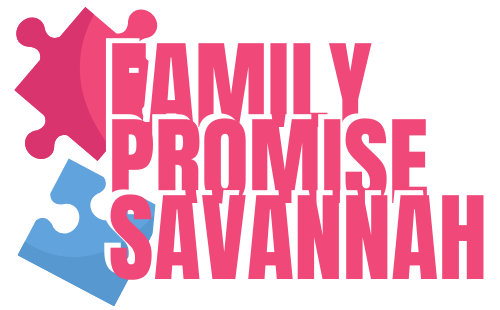In the fast-paced world of web design, staying updated with the latest trends and utilizing the right tools is crucial to creating visually appealing and engaging websites. As technology evolves, new web design tools emerge, enabling designers to push the boundaries of creativity and deliver immersive user experiences.
Responsive Web Design
Responsive web design has become a standard practice, considering the widespread use of mobile devices. It ensures that websites adapt seamlessly to various screen sizes and resolutions, providing optimal user experience across devices. Tools like Bootstrap and Foundation offer responsive frameworks and components, making it easier for designers to create mobile-friendly websites without compromising on aesthetics.
Minimalistic Design
Minimalistic design has gained immense popularity due to its clean and clutter-free aesthetic. This design approach focuses on simplicity, emphasizing ample white space, minimal elements, and clear typography. Tools like Sketch and Figma provide designers with intuitive interfaces and advanced features to create sleek and minimalist designs that resonate with modern audiences.
Dark Mode Design
Dark mode design has witnessed a surge in popularity, offering an alternative color scheme that reduces eye strain and conserves device battery life. With tools like Adobe XD and Canva, designers can effortlessly incorporate dark mode elements into their web designs, enhancing the visual appeal and usability of websites.
Microinteractions
Microinteractions refer to subtle animations and feedback that occur when users interact with elements on a website. These interactions add a layer of interactivity and delight, improving the overall user experience. Tools such as Principle and Framer allow designers to prototype and implement microinteractions seamlessly, making websites more engaging and interactive.
Voice User Interface (VUI)
With the rise of voice-controlled devices like smart speakers and virtual assistants, integrating voice user interfaces in web design has become increasingly important. Tools like Dialogflow and Wit.ai offer powerful natural language processing capabilities, enabling designers to create voice-enabled experiences that cater to the growing demand for hands-free interactions.
Here’s a list of Voice User Interface (VUI) options and their benefits:
1. Dialogflow: Dialogflow, powered by Google Cloud, offers a robust natural language understanding and processing platform. It enables designers to create conversational agents and voice-enabled applications with ease. Dialogflow provides advanced features like intent recognition, entity extraction, and context management, allowing for highly interactive and personalized voice experiences.
2. Wit.ai: Wit.ai is a powerful natural language processing (NLP) platform that enables designers to build intelligent voice interfaces. It provides pre-built NLP models and a user-friendly interface for training custom models. Wit.ai supports various languages and offers seamless integration with different platforms, making it an excellent choice for developing voice-controlled applications.
3. Voiceflow: Voiceflow is a comprehensive platform that simplifies the process of designing, prototyping, and deploying voice applications. It provides a visual interface where designers can create conversational flows, define intents, and handle user interactions. Voiceflow offers integrations with popular voice assistants like Amazon Alexa and Google Assistant, enabling designers to build voice experiences for different platforms.
4. Amazon Lex: Amazon Lex is a powerful VUI platform from Amazon Web Services (AWS). It allows designers to build intelligent chatbots and conversational interfaces using advanced deep learning technologies. With Amazon Lex, designers can easily integrate voice capabilities into their applications and leverage AWS infrastructure for scalability and reliability.
5. IBM Watson Assistant: IBM Watson Assistant is an AI-powered VUI platform that provides tools for creating chatbots and voice interfaces. It offers advanced natural language understanding capabilities and allows designers to train models using historical data. Watson Assistant supports multiple channels, including voice, making it a versatile choice for building voice-enabled applications.
Augmented Reality (AR)
Augmented reality has made significant strides in web design, providing immersive and interactive experiences. With tools like A-Frame and AR.js, designers can integrate AR elements into websites, allowing users to explore virtual worlds and interact with 3D objects directly from their browsers.
Chatbots and AI
Chatbots and AI-powered assistants have become prevalent in web design, enhancing user engagement and providing instant support. Tools like Chatfuel and IBM Watson enable designers to build intelligent chatbots that can handle customer inquiries, automate tasks, and deliver personalized experiences.
Illustrations and Animations
Visual storytelling has become an integral part of web design, and illustrations and animations play a crucial role in conveying messages and capturing users’ attention. Design tools like Adobe Illustrator and Lottie offer a wide range of creative options for designers to create captivating illustrations and animations that breathe life into websites.
Here’s a list of Illustrations and Animations options and their benefits:
1. Adobe Illustrator: Adobe Illustrator is a powerful vector graphics editor widely used for creating illustrations and animations. It provides a wide range of drawing tools, brushes, and effects that allow designers to create intricate and detailed illustrations. With its animation features, designers can bring their illustrations to life by adding motion and transitions.
2. Lottie: Lottie is an open-source animation tool developed by Airbnb. It enables designers to export animations created in Adobe After Effects as lightweight JSON files that can be easily rendered in web and mobile applications. Lottie animations are scalable, high-quality, and can be interacted with using JavaScript, making them ideal for adding captivating animations to websites and apps.
3. SVG Animation Tools: SVG (Scalable Vector Graphics) animation tools like GreenSock (GSAP) and Snap.svg provide designers with the ability to create animated vector graphics directly in the browser. These tools offer powerful animation APIs, easing the process of creating complex animations with smooth transitions and interactive elements.
4. CSS Animation Libraries: CSS animation libraries like Animate.css and WOW.js provide pre-built animation classes and JavaScript plugins that designers can easily integrate into their websites. These libraries offer a variety of animation effects, including fade-ins, slide-ins, and scrolling animations, enabling designers to enhance user experience and create visually appealing websites without the need for extensive coding.
5. Adobe After Effects: Adobe After Effects is a popular motion graphics and visual effects software. Designers can use After Effects to create intricate animations, motion graphics, and special effects. It offers a wide range of tools and features for creating dynamic and engaging animations that can be exported and integrated into websites, videos, and other digital media.
Collaboration and Prototyping
Collaboration and prototyping tools streamline the web design process, allowing designers to work seamlessly with clients and team members. Tools like InVision and Figma offer real-time collaboration features, enabling designers to gather feedback, iterate designs, and create interactive prototypes that simulate the final user experience.
Performance Optimization
In an era where users expect instant loading times, optimizing website performance is paramount. Performance optimization tools such as Google PageSpeed Insights and GTmetrix help designers identify and rectify performance bottlenecks, ensuring that websites load quickly and provide a seamless browsing experience.


Leave a Reply